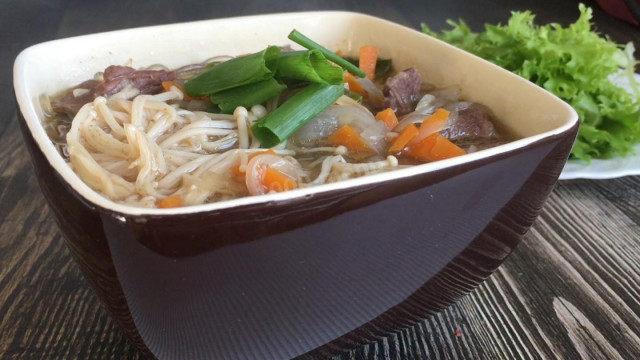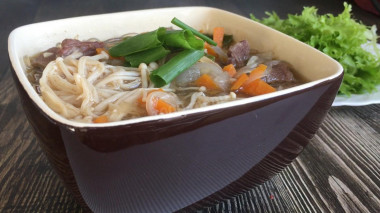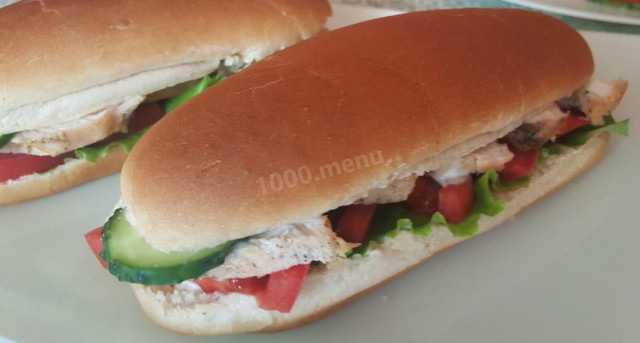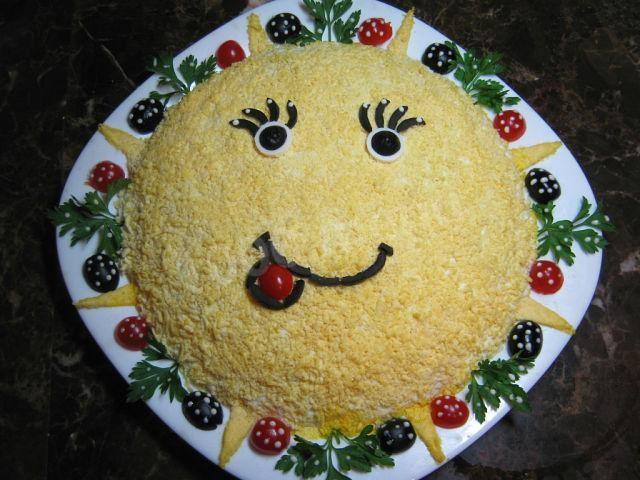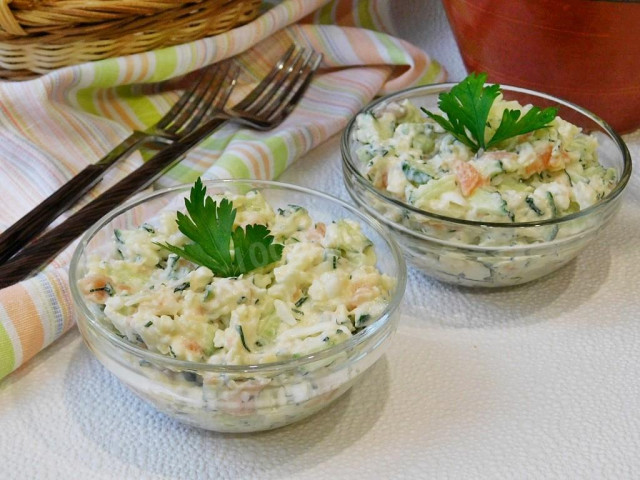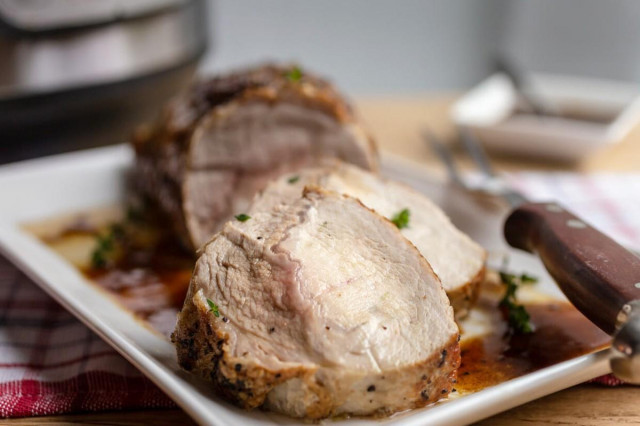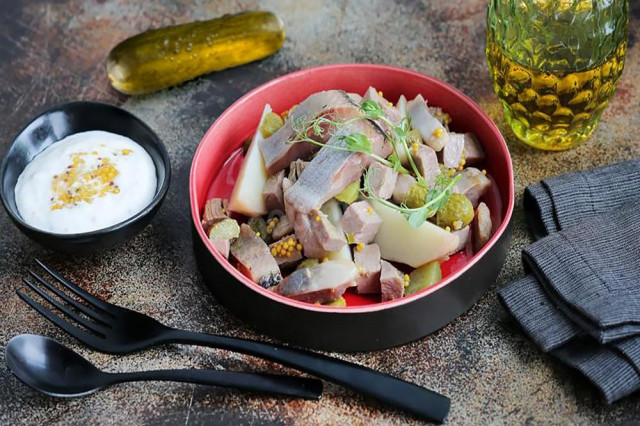Composition / ingredients
Cooking method
Thinly slice the beef.
Chop the garlic.
Put beef in a bowl, add garlic.
Then add sugar, honey, sesame oil, soy sauce and pepper.
Mix well.
Soak the noodles in cold water.
Chop onion, carrot, green onion.
Add salt to the water, bring to a boil.
Put onions, carrots, green onions and meat in boiling water.
Cook for 10 minutes on high heat.
Add noodles, cook for 5 min.
Add mushrooms, cook for 10 min.
Korean cuisine is generally spicy, spices are used abundantly in the preparation of dishes, especially red pepper: because of it, many Korean dishes have a characteristic red-orange color. The widespread use of pepper is explained by the fact that Korea, especially South Korea, is a country with a warm, humid climate, and pepper helps to preserve products longer. At the same time, Koreans began to use pepper only in the XVI century, when it was imported from South America by the Portuguese. Then the traditional way of cooking Korean dishes was formed. Peppery food was valued very highly, and the concepts of "delicious" and "spicy" in the Korean language became synonymous. The set of spices of Korean cuisine is not rich: for the most part it is garlic and pepper, but they are used in different proportions and combinations, therefore different tastes are obtained. The three main Korean condiments are soy sauce (kanjan), kochhujan, twenjan.
Korean cuisine of Soviet Koreans (kore-saram) is recognizable by the wide use of coriander, which gives Korean salads a characteristic taste and smell.
Inside Korean cuisine, Korean court cuisine stands out, which differs from the cuisine of ordinary people and the cuisine of the diaspora.
Korean cuisine has a lot in common with the other two most significant oriental cuisines — Chinese and Japanese. Like the Chinese, Koreans love and willingly eat pork. Like the Japanese, they eat a lot of fish, including raw. A characteristic feature of Korean and Chinese cuisines can be called the abundant use of red hot pepper.
The traditionally served Korean table includes a large number of small cups filled with snacks (panchkhans). A clear order of serving dishes, established several centuries ago during the Joseon dynasty, is observed. According to him, food is divided into main and secondary. According to the number of snacks, it was possible to determine the circumstances of the meal: whether it was the appearance of a child in the family, an anniversary for an adult, or just a dinner in the family circle. And 12 snacks were served in the so-called imperial meal.
Traditionally, Koreans eat with chopsticks (due to the relative rarity of bamboo on the Korean Peninsula, metal chopsticks are traditionally used), but a spoon is also served for each dinner, since there are many different soups in the menu of Korean cuisine proper. A spoon in Korean culture is a symbol of life: if there are four children in a family, they say "four mouths" in Russian, and "four spoons" in Korean. They say about the deceased, "he put his spoon down.
"
Calorie content of the products possible in the composition of the dish
- Onion - 41 kcal/100g
- Melted beef fat - 871 kcal/100g
- Fat beef - 171 kcal/100g
- Lean beef - 158 kcal/100g
- Beef brisket - 217 kcal/100g
- Beef - okovalok - 380 kcal/100g
- Beef - lean roast - 200 kcal/100g
- Beef shoulder - 137 kcal/100g
- Beef - ribs - 233 kcal/100g
- Beef - ham - 104 kcal/100g
- Beef - tail - 184 kcal/100g
- Boiled ham - 269 kcal/100g
- Beef corned beef - 216 kcal/100g
- Forest mushrooms - 21 kcal/100g
- Carrots - 33 kcal/100g
- Dried carrots - 275 kcal/100g
- Boiled carrots - 25 kcal/100g
- Honey - 400 kcal/100g
- Garlic - 143 kcal/100g
- Soy sauce - 51 kcal/100g
- Granulated sugar - 398 kcal/100g
- Sugar - 398 kcal/100g
- Green onion - 19 kcal/100g
- Salt - 0 kcal/100g
- Water - 0 kcal/100g
- Pepper - 26 kcal/100g
- Sesame oil - 899 kcal/100g
- Starch noodles - 336 kcal/100g

